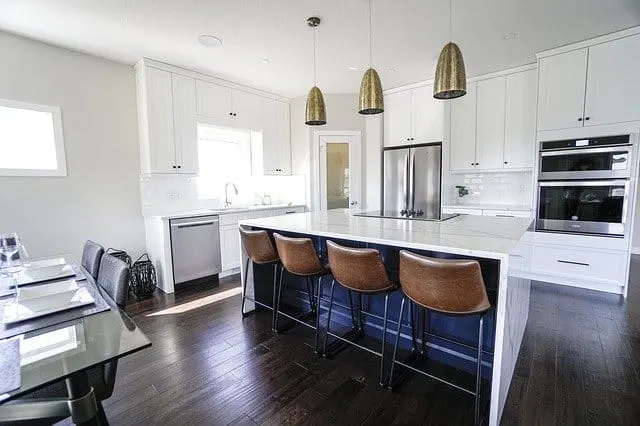
Selecting the right floor for any space is the foundation of interior design. Firstly because they are the first thing someone notices as soon as they enter a room. Secondly, kitchen floors withstand an immense amount of weight, constant spilling, and a great deal of foot traffic. So to hit that right balance of practicality and aesthetics, it is advised to consult kitchen remodeling experts before calling the shots on any of the remodeling decisions.
Luckily, many remodeling companies like Kitchen Infinity offer a free quote to its new customers.
If you are struggling to find the right fit among the infinite possibilities of tiling options, then this kitchen flooring 101 will help you out while making the crucial and costly decision.
Do: Layout Of The Kitchen
The first and foremost factor to account for is the layout of your kitchen.
For example, If you have an open floor plan, in that case, you should choose the same tiles throughout the entire living/cooking space. You can overcome the architectural constraint of a narrow kitchen by laying them down in a vertical pattern.
In addition to this, the dimensions of an area are also super important since they help determine the cost. The cost can be further reduced down by choosing a less stylish tile for under the sink, appliances, countertop and shelf area as they will remain concealed.
Do: Who Lives In The House?
The second factor in line is the usage and functionality of the kitchen. Consider various aspects of your lifestyle like:
- How often do I cook in the kitchen?
- How many people will I be cooking for?
- What is the size of our family?
- How many members of the family will be cooking in it?
- Do you have pets or toddlers who can scratch or spill on the floor?
- How often can you manage to clean or polish it?
These things impact the wear and tear of the material, thus determining its durability.
Considering these factors will help you create an ideal kitchen for your home.
Do: Protective Coating And Sealing
Imagine cooking a meal in the kitchen, what are the things its floor has to endure?
To name a few spilling liquids, falling of heavy utensils, frequent walking, steaming heat, and scratching caused by furniture movement. All of these can result in stains and marks that can start to show up earlier than expected. Moreover, moisture and heat can also damage them.
Fortunately, you can avoid all this fuss by simply rubbing a protective waterproof coating and proper sealing by a team of experts.
Don’t: Forget The Climate!
Mostly, people leave this minor detail unignored, but it makes a difference in governing the lifetime of tiling.
For example, if you live in an area of high humidity where it rains quite often, then hardwood floors can be easily damaged. Porous materials like natural stone tiles that can allow the water or liquids to penetrate through can result in the growth of bacteria and mold.
For areas surrounded by construction or industrial sites, floors with earthy tones are a smarter choice than sparkly whites.
Don’t: Being Too Trendy
All that glitters is not gold! Concrete floors might seem fashionable on glossy magazine pages or contemporary designer homes, but they are challenging to maintain.
If something is working for everyone does not mean that it will work for you too. So while selecting the material of the design of tiles, keep the constraints of your lifestyle, budget, furniture, and space in mind. Even more important if you’re planning to rent out the property, says HMR Management; then definitely stick to the basics.
One more thing, kitchen flooring is something that can last a lifetime if maintained well, so stick with something you can bear to look at that long.
Regardless of the material, make sure to wipe, wash, and wax them as per the requirement to prolong their lifespan.
- Sagittarius Man & Gemini Woman Love and Sex Compatibility - January 31, 2024
- Taurus Ascendant Rising Personality Traits in Men (Guide) - January 31, 2024
- How to Seduce and Attract a Sagittarius Man (Seduction Tips) - January 31, 2024
